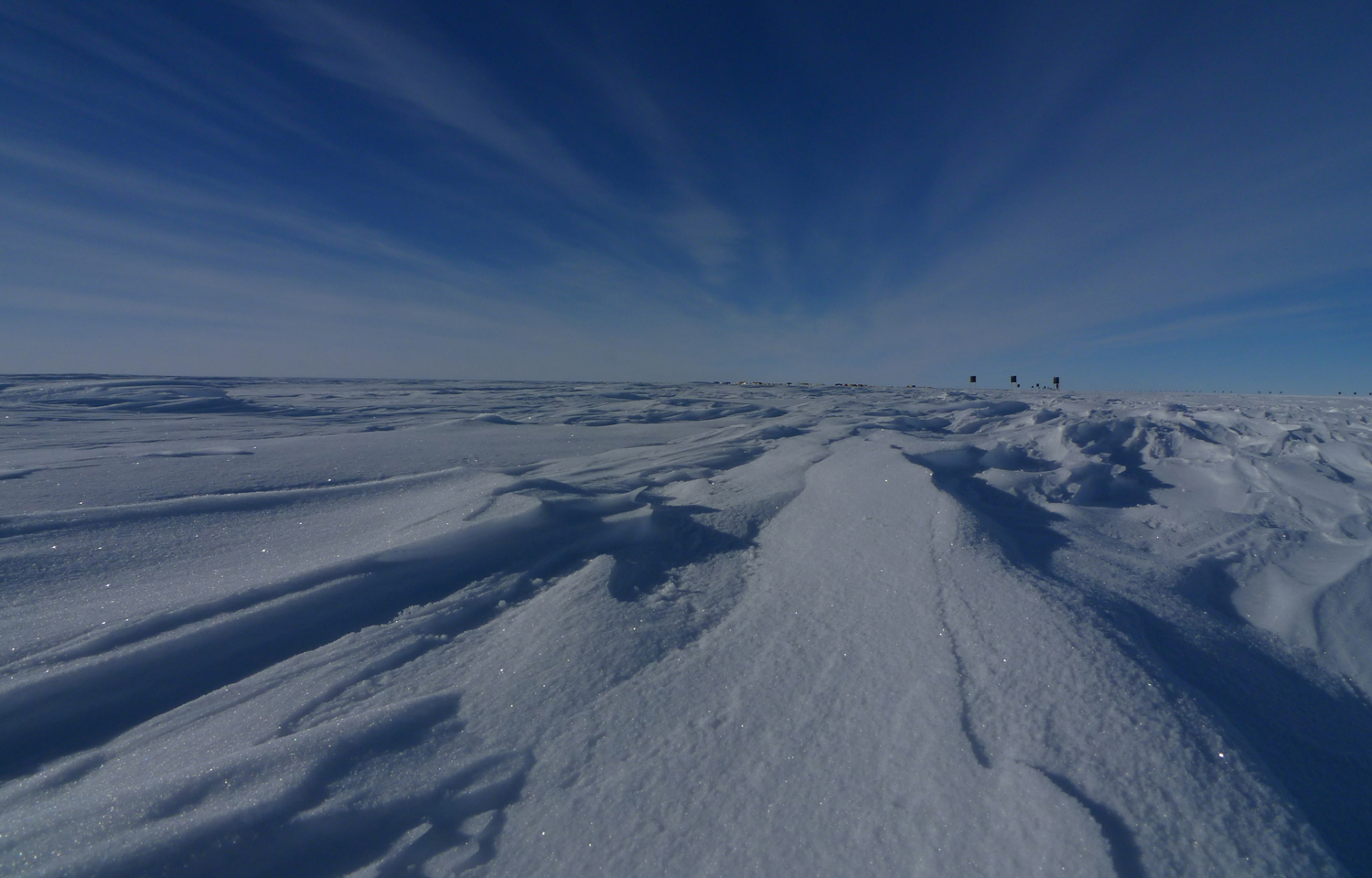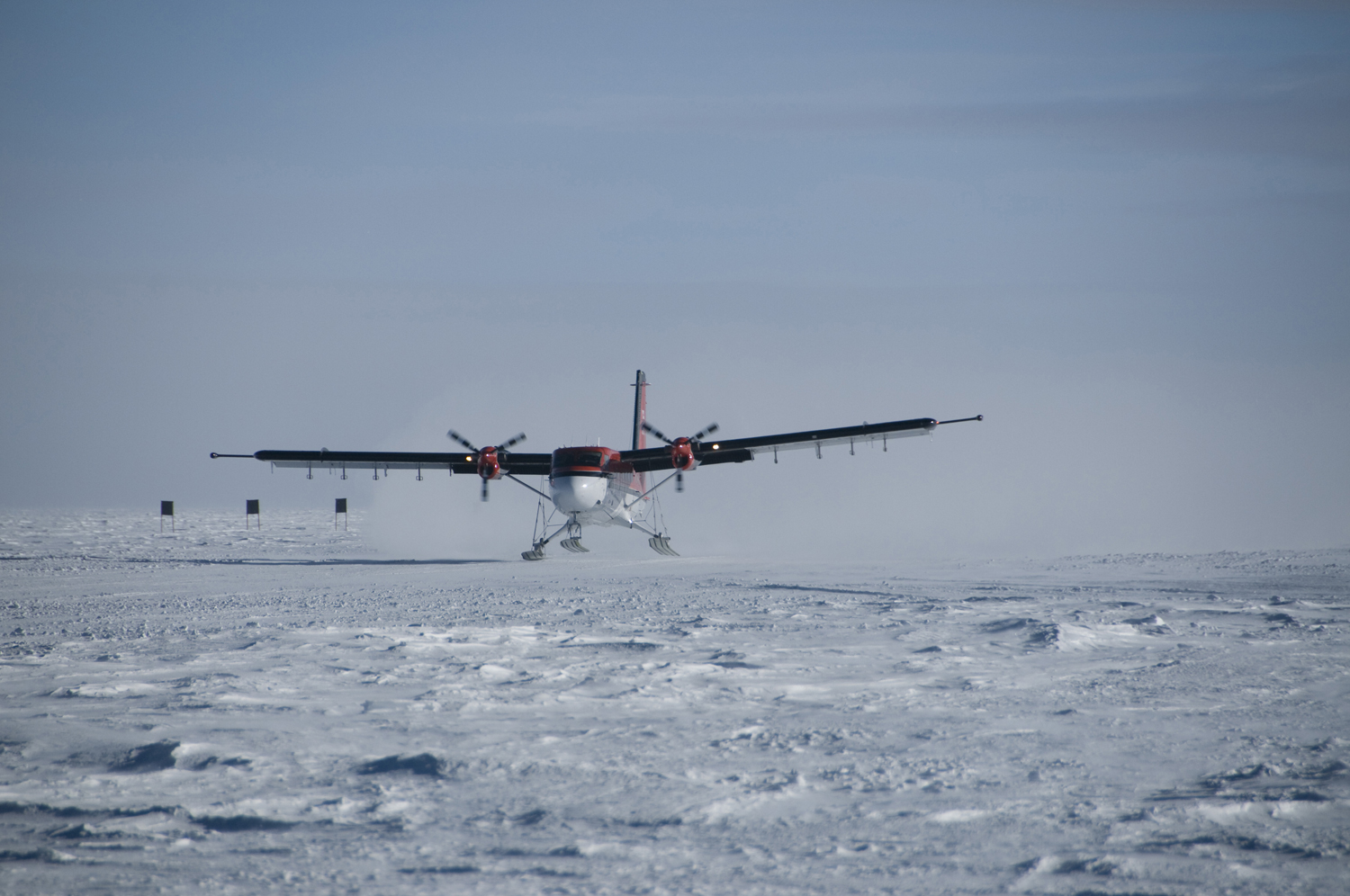
Bottom's Up: Antarctica's Surprising Ice Secret

An unexpected discovery in the Antarctic has turned perceptions upside-down on how ice sheets form.
While glacier-building is usually attributed to snowfall on the surface, scientists have found that freezing water from below an Antarctic ice sheet is responsible for as much as half of its thickness. The new finding, detailed online today (March 3) in the journal Science, could improve predictions of how the sheets will react to climate change and how high sea levels could rise if that ice were to melt.
"We didn't go out there looking to find this," said lead researcher Robin Bell of Columbia University's Lamont Doherty Earth Observatory in New York. "We were hoping we would learn something about sub-glacial hydrology."
But images from state-of-the-art penetrating radar brought a surprise for Bell's seven-nation team: Almost a quarter of the entire ice sheet in an area of East Antarctica that researchers call "Dome A" appeared to originate from below.
Built from below
Of course, ice sheets are better known for building from the top down, with snow accumulating each year to form layers like a cake.
While that process is still occurring, the researchers found that liquid water under the continent's coat of ice regularly thaws and refreezes to the bottom, actively altering the structure of the sheet and deforming its surface. In some parts of the remote, California-size region they studied, ice formed on the bottom at an even greater rate than snow accumulated at the top.
Sign up for the Live Science daily newsletter now
Get the world’s most fascinating discoveries delivered straight to your inbox.
"We know that ice freezes on, but we were thinking 5 to 10 meters [16 to 33 feet] maybe," Bell told OurAmazingPlanet.
The thickest package of frozen-on ice detected was considerably larger: 3,600 feet (1,110 m) thick.
The researchers think the dynamic between the water underneath and the overlying ice sheet has existed for the last 32 million years, ever since East Antarctica became encased in ice. And the interaction may not be restricted to this region.
"From our quick look at other radar data," Bell said, "we think that we'll find this structure in all other ice sheets."
Climate change clues

The implications could be substantial. The Antarctic ice sheet alone holds enough freshwater to raise sea levels by 200 feet (60 m), posing a threat to major cities even if only a small piece were to be lost.
Bell noted it is too early to say whether the ice is melting faster or slower than has been thought. Either way, incorporating the more accurate structure should improve predictive models of ice sheet behavior under various climate-change scenarios.
The finding also should help in the search for the world's oldest ice, which could hold further climate-change clues.
"Ice sheets are more complicated than we thought. If we want to know how they are going to change in the future, we need to get the basic structure right," Bell said. "This is just another piece of the plumbing that's been missing."
This story was provided by OurAmazingPlanet, a sister site to LiveScience.









